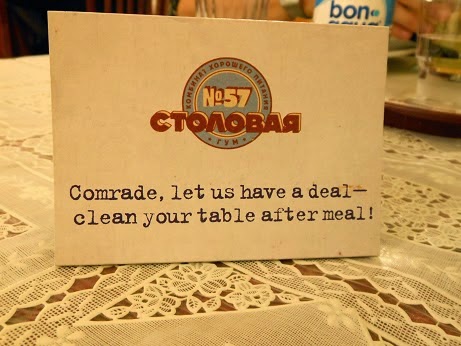 |
| Saint Basil's Cathedral |
Before you travel learn at least how to say, ‘Please’, ‘Thank you’, ‘Hello’, ‘Pardon me’, ‘Where is…’ and so forth. Most folks you’ll interact with will have some English, particularly if they are less than 40 years old; as with all places you visit, people appreciate your efforts to be polite. Russians may appear dour and unfriendly, but given a chance to interact, most are helpful and have a good sense of humor. Currently, the country is experiencing unrest so the people are not as out-going as in previous years, but they still want travelers to like their home.
First, some logistics. There are extra steps for getting into and out of Russia. Russia has
 |
| Invitation |
 |
| Domodedovo Airport |
 |
| Airport Crush |
There are two hotels I’ve used in the Moscow area. The Aerostar Hotel is not particularly close to anything except the Metro, but the staff treats you
 |
| Aerostar Hotel |
If you’re going to be touring Moscow on your own, use the Metro; it’s the cheapest, most efficient way to get around. Even if you don’t speak any Russian, go to one of the ticket
 |
| Subway Marker |
The first place most people want to see is Red Square, and the Near-Normal Travelers were
 |
| Red Square with Wellness Festival |
 |
| Lenin's Mausoleum |
 |
| Kremlin |
Also next to Red Square is the famous State Department Store, GUM. Although once highly regulated, it now houses high-end shops, a variety of restaurants, and pleasant sitting areas. Our first night in Moscow we ate at the Stolovaya 57, a traditional Soviet-style cafeteria. I was surprised at the variety of offerings, particularly the desserts and the wine bar. The entire
 |
| Comrade, let us have a deal - clean your table after meal! |
Stay tuned for more Near-Normal Russian adventures!
©2013 NearNormal Design and Production Studio - All rights including copyright of photographs and designs, as well as intellectual rights are reserved.
No comments:
Post a Comment